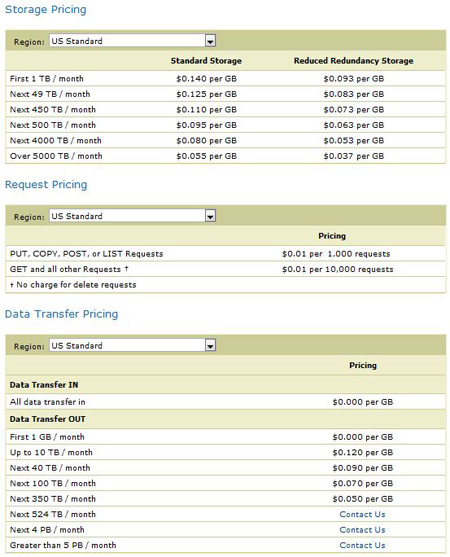

The REST API for managing Amazon S3 buckets allows developers to connect stored data to other web applications and services. Features such as metadata support, prefixes, and object tags allow users to organize data according to their needs. S3 is capable of storing diverse and generally unstructured data, but it's also suited for hierarchical data and all kinds of structured information. This high-level and generic storage structure affords users near-infinite flexibility. Uploaded objects are referenced by a unique key, which can be any string. S3 provides tools for uploading large objects in parts and migrating big data into storage.ĪWS S3 is a key-value store, one of the major categories of NoSQL databases used for accumulating voluminous, mutating, unstructured, or semistructured data. Capacity and data structuresĪmazon sets no cap on the total volume or number of items that can be stored in S3, but individual objects can’t be larger than 5 gigabytes, which is the limit on a single upload. Organizations may use naming conventions to identify data owners, improve access control, and make the store more navigable for end users.Īmazon S3 users can work with the console or web-service interfaces to access raw objects or buckets. AWS S3 uses an Object Key, along with a version identifier, to uniquely identify objects in a bucket. When users upload data, they create bucket and bucket name first, then move however many objects they need into it. All of S3’s main features, such as the interfaces and APIs, can act either on buckets or individual objects. Buckets are the main containers in S3, and every object must be stored in one. AWS S3 bucketsĪmazon S3 objects are organized in buckets. This customizable home page provides a single place to access everything you need to manage AWS tasks. AWS resources, including S3, are managed through a web application known as the AWS Management Console. To start using this AWS cloud service, you simply need to sign up for an AWS account. Developers in particular will enjoy the ability to build robust, speedy mobile and web-based cloud-native apps that are configured to be highly available and scale automatically.
#Amazon s3 pricing full#
An S3 data lake enables users to unlock insights to maximize the full value of their data. Even Amazon itself relies on S3 to store critical project data. Makers of apps can also store the data they collect. Amazon S3 use casesĬompanies like Airbnb, Netflix, Pinterest, and Reddit use S3 to host their web content, images, archives, backups of on-premises data for disaster recovery, and systems of record. AWS S3 also offers powerful functionality with minimal complexity. Using reliable, scalable infrastructure and a key-based object storage architecture, Amazon S3 is well suited to host massive amounts of structured and unstructured data in the form of data lakes. The service itself is plugged into the wider Amazon Web Services (AWS) data ecosystem. Amazon S3 overviewĪmazon Simple Storage Service (S3) is a popular cloud storage service with critical features like encryption, access control, and high availability.įirst deployed in the US in 2006 and Europe in 2007, Amazon S3 from AWS services is available in all AWS regions where Amazon Web Services provides cloud solutions, and can be accessed worldwide through a web interface. One of the simplest yet most powerful options is Amazon Simple Storage Service (S3). However, when it comes to choosing where to store data in the cloud, there are many choices. Today’s enterprises, from small local businesses to international online retailers who generate a large amount of data, are looking to move to the cloud for increased data availability, better data security, and a smaller financial footprint.

What is AWS S3? Your guide to powerful features with minimal complexity


 0 kommentar(er)
0 kommentar(er)
